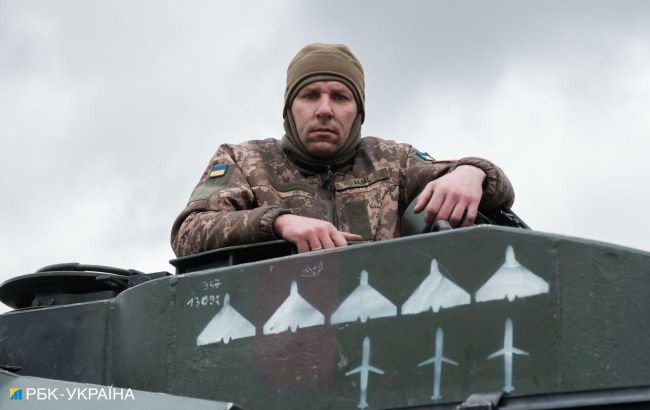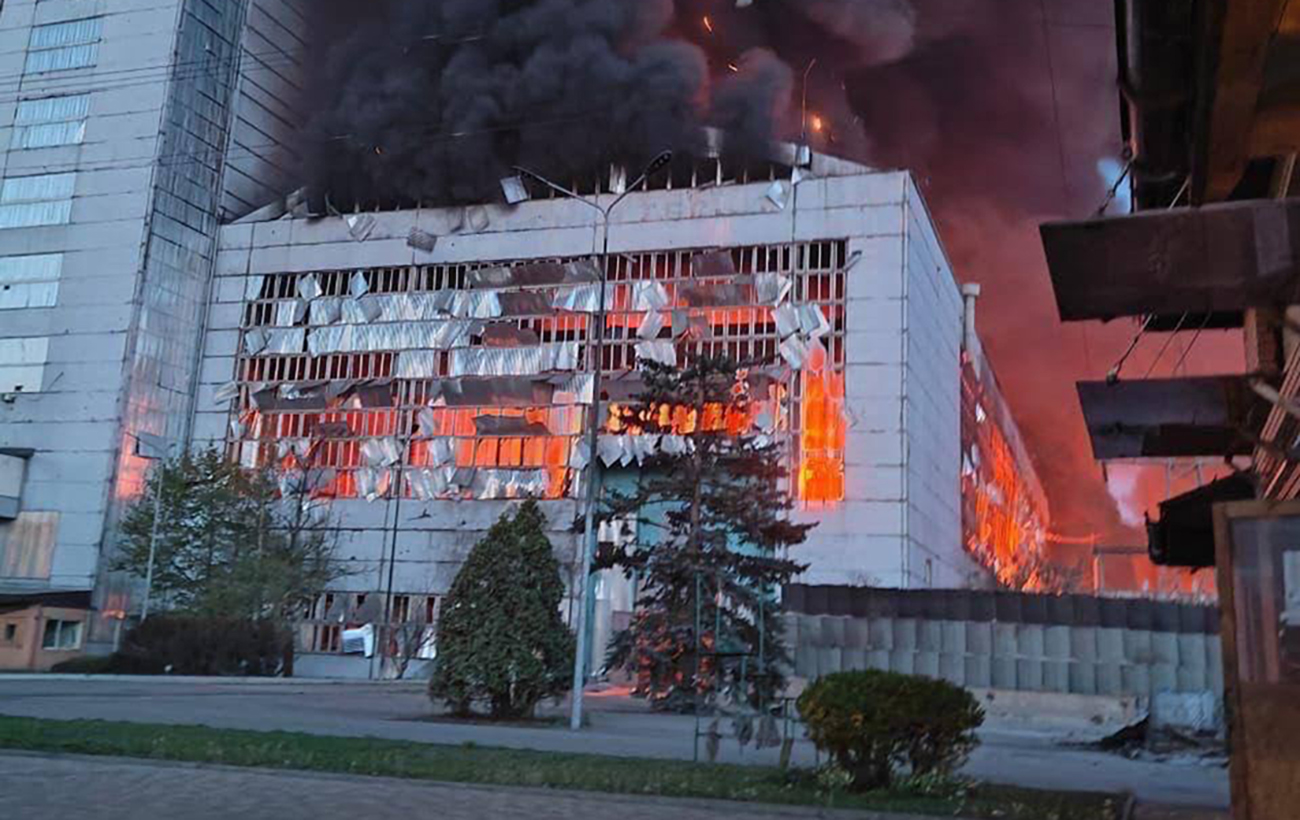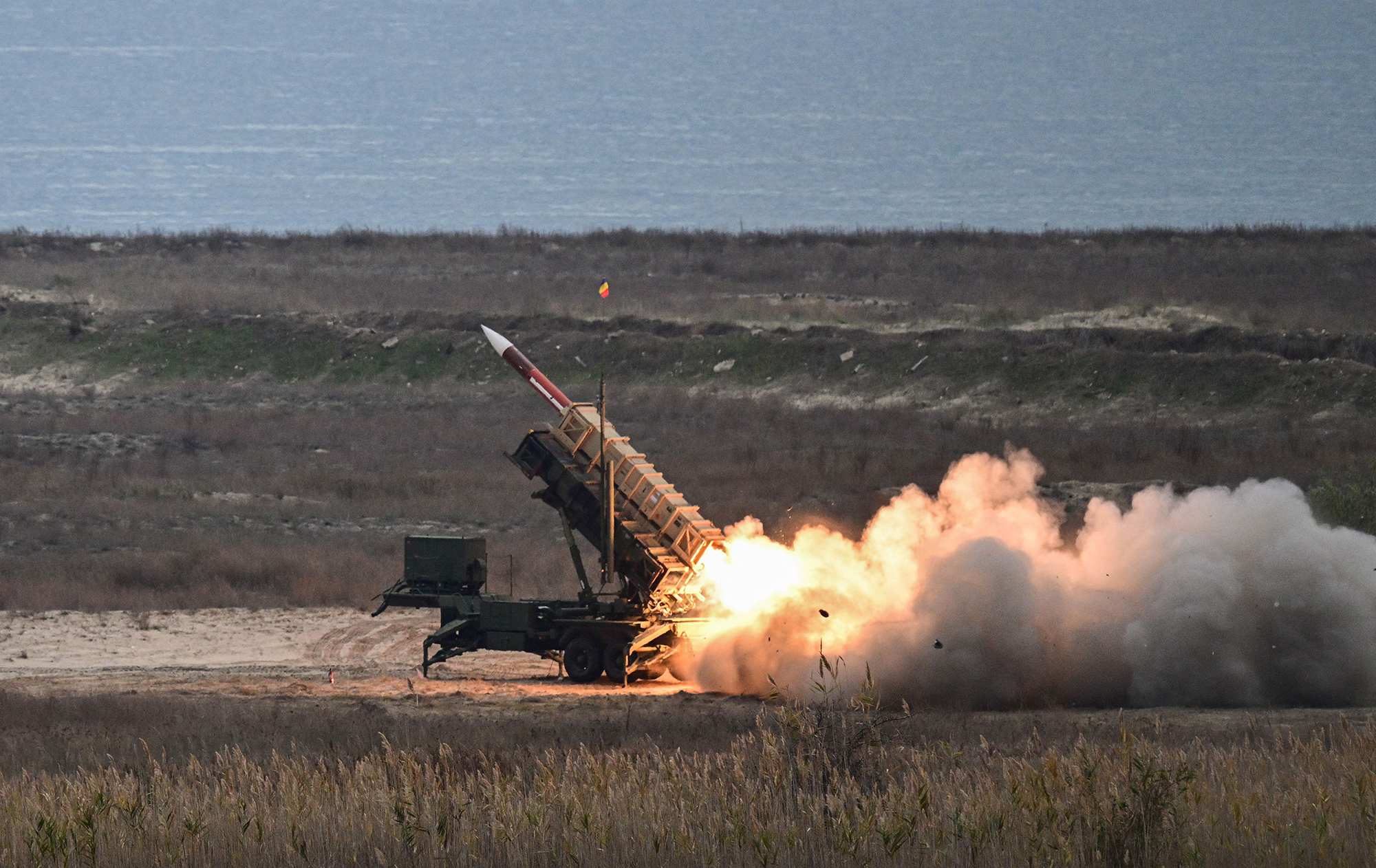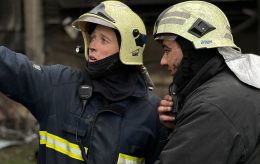Western concerns over Ukraine's air defense exhaustion: Is the problem as dire as portrayed
 Ukrainian soldier on a Gepard self-propelled anti-aircraft gun (photo: Vitalii Nosach/RBC-Ukraine)
Ukrainian soldier on a Gepard self-propelled anti-aircraft gun (photo: Vitalii Nosach/RBC-Ukraine)
Russia has increased its shelling of Ukraine's energy sector. Ukraine's air defense system continues to repel a large number of Russian attacks, but the problem of lack of ammunition and the systems themselves has worsened. RBC-Ukraine explains what is happening with the Ukrainian air defense system and whether the situation is as critical as it is presented in the Western media.
Sources used: Information from open sources, comments by military expert Ihor Romanenko, and military and political observer of the Information Resistance group Oleksandr Kovalenko.
Contents
- Ukrainian dome: What air defense systems protect sky
- Changing tactics: Where and what Russia strikes
- Panic over air defense: Is it that bad
Russia set out to terrorize Ukraine's energy system back in 2022, before the start of winter but did not achieve the expected result. The Ukrainian energy sector withstood the attack and blackouts were avoided. It was expected that the Kremlin would resume its plan to destroy Ukraine's critical infrastructure before last winter, but this did not happen, at least not on the same scale.
Nevertheless, for several weeks now, Russian air forces have been actively shelling Ukrainian energy facilities. At the same time, Russia has been methodically targeting cities bordering Ukraine. Ukraine's air defense system continues to repel enemy attacks, but today the problem with both missiles and the systems themselves is acute, as both Western media and Ukrainian politicians have said.
Ukrainian dome: What air defense systems protect sky
In two years of Russia's full-scale war, Ukraine has managed to build a multi-level air defense system. This means that all air defense and missile defense systems are used to protect the sky, both aircraft and man-portable air defense systems with different ranges. Such a system makes it possible to build protection against missiles of various ranges and types, bombers, and UAVs.
Today, Ukraine uses mainly Western air defense systems, including Patriot, Iris-T, SAMP-T, and NASAMS. In addition, Ukrainian air defense forces also use Soviet systems such as S-300, Buk, and various man-portable air defense systems of both foreign and local production. Self-propelled anti-aircraft guns, such as the German Gepard, which successfully shoots down Iranian Shaheds, are also used to destroy drones.
During the two years of Russia's full-scale war with various massive attacks by a large number of missiles and drones, Ukraine has learned to shoot down almost everything. Ukrainian troops quickly switched from Soviet systems to foreign ones. They are certainly better at what they do. In addition, it is easier for Western partners to provide them with shells rather than search for Soviet ammunition for outdated air defense systems.
 Patriot air defense system (photo: Getty Images)
Patriot air defense system (photo: Getty Images)
But any system is depleted. While the US is in the throes of election fever and Europe is unable to cope with large-scale production, stocks of both air defense missiles and their carriers are dwindling. At the same time, Russia is taking advantage of the so-called window and experimenting with various new tactics, trying to bypass or break through the defense system, destroy important infrastructure facilities, and create chaos in Ukraine.
Changing tactics: Where and what Russia strikes
For several weeks now, Russia has been actively attacking both the border areas and Ukraine's interior, trying to destroy the energy infrastructure. At first, the Kremlin decided to inflict New Year's terror on Ukrainians by firing hundreds of missiles and drones at Ukrainian cities on January 2. Russian troops focused on Kyiv and Kharkiv. The shelling damaged residential buildings and killed Ukrainian people.
For a while, the massive attacks stopped as Russia assembled its missiles. In March, the Kremlin renewed its efforts to destroy Ukraine's energy system and simultaneously attacked the border cities of Kharkiv and Sumy. On March 22, the Russian Air Force carried out one of the largest attacks on infrastructure facilities, destroying the Zmiiv Thermal Power Plant and Heat and Power Plant-5, and leaving the Kharkiv region without electricity.
Russian missiles also severely damaged Ladyzhyn TPP in the Vinnytsia region, Burshtyn TPP in the Ivano-Franlivsk region, and the Dnipro Hydroelectric Power Plant. On March 29, the Russians hit the Dniester Hydroelectric Power Plant in the Chernivtsi region and the Kaniv Hydroelectric Power Plant in the Cherkasy region. On April 11, Russia attacked the Sumy Thermal Power Plant with guided aerial bombs and destroyed the Trypillia Thermal Power Plant in the Kyiv region with missiles.
 Trypillia TPP (photo: Telegram channel Lachen Pyshe)
Trypillia TPP (photo: Telegram channel Lachen Pyshe)
According to Ukrainian Energy Minister Herman Halushchenko, over the past few weeks, Russia has damaged 80% of Ukraine's power plants. Some of them have been destroyed and will take years to restore.
Last year, Russia mostly targeted distribution and transformer substations, but the Kremlin failed to plunge Ukraine into cold and darkness. Taking into account its "mistakes," this year Russia is striking directly at the thermal power plants and hydroelectric power plants themselves, realizing that their restoration is much longer and more costly. This is one element of the change in Russian shelling tactics. The second element is not to strike directly at Kyiv, but to strike at those cities that are less protected, for example, those regions where the sky cannot be completely closed due to proximity to the front, military expert Ihor Romanenko says.
"If you hit the targets that are protected from missiles, such as Kyiv, you may not be able to hit them because we can shoot down their missiles. If you hit other targets, as they do, then this is the question of why the number of missiles shot down has decreased," Romanenko says in a commentary to RBC-Ukraine.
Today, Russia is trying to implement a plan that it was going to implement back in February 2024 - to accumulate a sufficient number of missiles and massively attack critical infrastructure. However, in February, the Ukrainian Armed Forces successfully shot down several A-50 long-range radar detection and control aircraft that helped the Russians target their targets. Therefore, the main attacks took place in March and April. The Kremlin's current plan is much more effective, as stated by Oleksandr Kovalenko, a Ukrainian military and political observer at the Information Resistance group.
"This year they have analyzed all this, made conclusions, and figured out how to increase the effectiveness of strikes on energy infrastructure. Just hit those areas where there is nothing to intercept the Kinzhal and Iskander missiles. And this is almost everything except Kyiv," Kovalenko says.
In addition to changing tactics, Russia continues to experiment with missiles. According to some media reports, Russian troops destroyed the Trypillia Thermal Power Plant with new Kh-69 missiles. These are subsonic cruise missiles for tactical aircraft. The Ukrainian Air Force of Ukraine notes that the X-69 is an improved analog of the Kh-59 and the Ukrainian Armed Forces are currently studying how to counter it, although, according to the spokesperson of the Ukrainian Air Force, Ilia Yevlash, the Patriot missile system will cope with it.
Another novelty from the Russians is the ZM22 Zircon missile, which the Russian Armed Forces allegedly fired at Kyiv on March 25. According to Defense Express, this is a hypersonic missile, unlike the Kh-47 Kinzhal. What is noteworthy is that both the Kh-69 and the Zircon had parts manufactured in 2023, and the Zircon, according to RBC-Ukraine's sources, had components from the United States. This suggests not only that there are still loopholes in Western sanctions, but also that Russia is producing missiles right off the shelf.
Panic over air defense: Is it that bad
After several massive Russian attacks, the Western media raised the question of what is wrong with Ukraine's air defense system. ISW (Institute for the Study of War - ed.) analysts called Ukrainian air defense "degraded," Bloomberg reported that Ukraine is in its most fragile position in the last two years, including due to a critical shortage of ammunition for air defense.
The most high-profile statement was made by Julian Röpke, a journalist for the German agency Bild. He reported that Ukraine no longer had missiles for the Patriot and Iris-T air defense systems. Commenting on this high-profile statement, Ilia Yevlash, spokesperson for the Ukrainian Air Force, noted that Ukraine needed more missiles.
"We must understand, first of all, that Ukraine does not produce these systems (Patriot and SAMP/T - ed.) and ammunition for them on its own. Therefore, of course, we need more missiles," Yevlash says.
At the same time, he urged not to panic and noted that Ukraine, despite the statements of the German journalist, still repelled another Russian attack. "We shot down 16 out of 20 Kh-101 and Kh-555 missiles. We also shot down almost all 40 drones. Two out of four Kh-59 missiles. Of course, it is difficult to shoot down Kinzhals," adds Yevlash.
 Patriot air defense system (photo: Getty Images)
Patriot air defense system (photo: Getty Images)
Later, the Presidential Office responded to the journalist's statement. According to Mykhailo Podolyak, an adviser to the head of the Office, there are still missiles for the Patriot Iris-T, but they are in short supply. "The system is overloaded. Now we have to understand whether we can save the system, whether we need additional air defense systems, especially against hypersonic ballistic missiles, and whether we can restore the destroyed facilities," Podolyak explained to The Guardian.
Ukrainian Foreign Minister Dmytro Kuleba once again asked Western partners for additional air defense systems, noting that his team had found about a hundred "free" air defense systems in other countries. Amid all the statements, President Volodymyr Zelenskyy said that 25 Patriot systems with 6-8 batteries each are needed to completely cover Ukraine. Ukrainian Infrastructure Minister Oleksandr Kubrakov, in turn, said that the only thing that can protect Ukraine's critical infrastructure is an air defense system. No other methods have been invented yet.
"There are no ready-made solutions for protecting energy facilities in the world, except for air defense. The construction projects that we are implementing now were developed together with the Ukrainian, American, British, Japanese, and German military and energy companies from scratch," Kubrakov writes on his Facebook account.
Ukrainian politicians emphasize missile defense in particular, rather than air defense in general. Russia has begun to fire ballistic missiles that can be shot down by anti-aircraft missile systems, including the Patriot.
"European countries are looking at this, but so far they are keeping these systems for themselves. The Americans are trying to help in some way, they have allocated money for the modernization of HAWK systems. But they are old. The situation is complicated, and we need to fight for ammunition for air defense, and we need to fight for an increase in the number of means, especially missile defense. We see that ballistic missiles are reaching their targets in areas where there is no missile defense," Romanenko says.
For example, Kharkiv, which Russia has been attacking with particular ferocity lately, is being hit by ballistic missiles and air bombs. Accordingly, to close the city and the region, foreign ballistic missile defense systems and F-16 fighters from the defense center are needed. But there is another difficulty here: it is dangerous to deploy Patriot systems near the front. The situation is the same with the Sumy region, which is being methodically destroyed by Russian air strikes.
This situation is far from new, and at various times both representatives of the Ukrainian Air Force and Ukrainian politicians repeatedly state that Ukraine has never had enough missiles and the systems themselves. Ammunition for air defense and missile defense is always needed, and a lot of it, because Russia does not stop - despite the sanctions, the Russian military-industrial complex continues to produce the number of missiles and drones that allow Russians to carry out both pinpoint strikes and massive attacks on Ukrainian cities. At the same time, many more complexes are needed to cover important critical facilities.
Today's situation, when Russia was able to damage 80% of Ukraine's power plants, is not because Ukraine's air defense system no longer has any missiles at all. It is because Russia has changed its tactics and is now hitting more places that were not previously fully covered by such powerful systems as the Patriot.
"The missiles that we don't shoot down, in the areas where they arrive, we didn't shoot them down because there are no such systems. That's why the number of effective hits is higher because the Russians have started to strike those areas with a missile component that cannot be shot down there. There are no Patriot systems in the areas where Kinzhals or Iskanders are flying. There are no Patriots in Odesa, and on April 10, six Iskanders flew into Odesa," Kovalenko adds.
At the same time, the Western media played into Ukraine's hands by raising the issue of a critical shortage or complete lack of air defense ammunition. Their loud statements allowed Ukrainian politicians to remind their Western allies once again that the full-scale war has been going on for more than two years, and the skies over Ukraine have not been closed. Kuleba, for example, stating the need for air and missile defense, added that "soft and quiet diplomacy has not worked."
The reaction of Western politicians was not long in coming. Polish President Andrzej Duda said that Warsaw could provide Ukraine with Soviet missiles for air defense. Kuleba said that he was already negotiating the transfer of two Patriot and one SAMP/T. On April 13, Zelenskyy said that Germany would give Ukraine another Patriot system and that it was possible to transfer the Iris-T system.
"Germany's leadership is felt, and thanks to this leadership, we will be able to save thousands of lives and will be able to give Ukraine more protection from Russian terror," Zelensky adds.
Russia, trying to destroy Ukrainian civilian infrastructure with new mass attacks, has a more global goal - to break the resistance and force Kyiv to negotiate on the most favorable terms for Moscow. Instead, Ukrainian politicians have once again gained a chance to be heard by Western partners who are willing to provide more air defense systems. However, the price for such a positive decision for Ukraine was again quite high.

